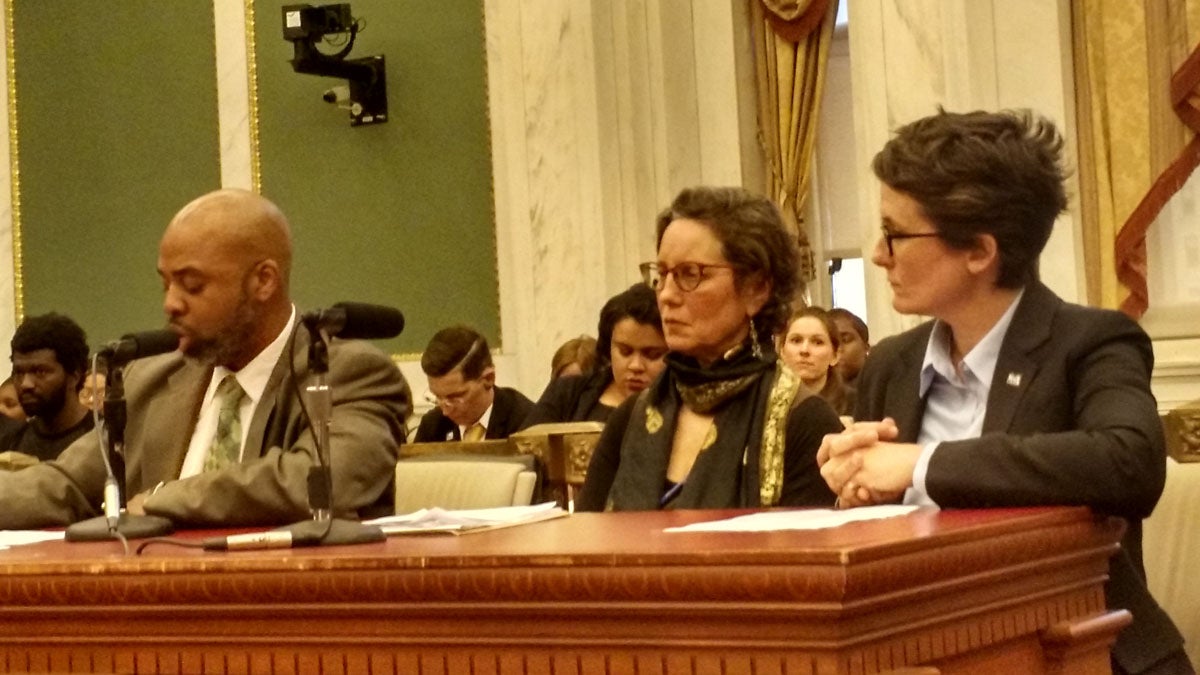Are kids aging out of foster care driving Philly youth homelessness surge?

Gary Williams
In Philadelphia, youth homelessness seems to be on the rise.
But at a packed hearing devoted to the problem on Thursday, advocates and service providers told city council members the exact number of homeless young people is difficult to pin down.
“The short answer is: we don’t really know and the other answer is it depends on how you count, how you define homelessnes and how you ask,” said Elizabeth Hersh, the new director of Philadelphia’s Office of Supportive Housing.
During the annual Point In Time count in January, volunteers counted about 700 people without shelter and the city estimates up to 8 percent of them were between the ages of 18 and 24. There were also more than 700 young people under 24 living in emergency shelters and transitional housing programs.
But there are likely many more who don’t show up in the tally.
“Young people experiencing homelessness hide,” Hersh said, noting many of them couch-surf. “They are afraid adults will make their lives worse, not better.”
A disproportionate number of homeless young people identify as LGBTQ — about 40 percent nationally — and end up on the streets because they have been kicked out of their homes by their parents or other family members. Another part of the problem is the high number of young people aging out of foster care without stable housing.
Department of Human Services deputy commissioner Gary Williams put the number around 250 per year. However, Shani Meacham, director of housing and emergency services at Valley Youth House, cited the department’s needs-based budget for this fiscal year, which projected that of the 841 young adults expected to age out of the system between July 2015 and June 2016, 346 will not have permanent homes to go to.
Meacham asked council members to imagine a young person in their lives between the ages of 18 and 21.
“Maybe they stay at home while saving money for the first few months or even years of empoyment,” she said. “Imagine all the benefits they may have received by having a stable and supportive home. Now imagine those supports are gone or they never existed.”
Phantazia Washington, who identifies as queer, was 16 when she dropped out of high school and became homeless. The only child of an often absent, alcoholic mother, Washington told city council members she like many others “felt safer in the street than foster care.”
Now a staffer at The Attic Youth Center, Washington recommended the DHS to recruit more people willing to foster LGBTQ youth and to inquire about the sexual orientation of those young people to find them appropriate placements.
While there are a number of programs that serve homeless youth in Philadelphia, service providers said there are not enough resources to meet the demand.
“I don’t think shelters are the right place for young people,” said Hersh. “They need to be in transitional and other kinds of programs that have specialized services tailored to their needs.”
A city council committee, led by junior council members Helen Gym and Allan Domb, is planning to release a strategic plan to address this and other issues that contribute to the problem.
This is a corrected version of this story. The original misspelled Elizabeth Hersh’s last name.
WHYY is your source for fact-based, in-depth journalism and information. As a nonprofit organization, we rely on financial support from readers like you. Please give today.

